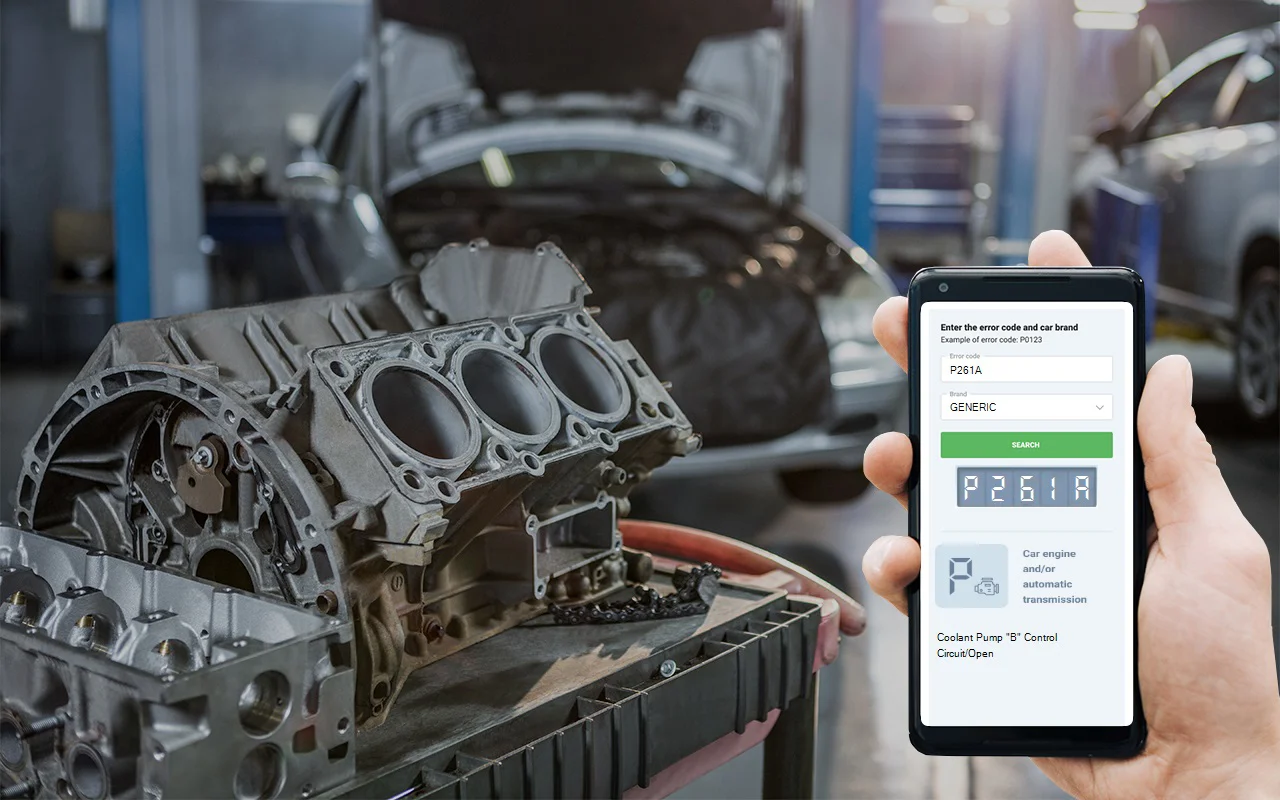When you see that P261A code pop up, what’s really happening is your car’s computer-the ECM-is flagging an issue with the control circuit for the auxiliary coolant pump, specifically the ‘B’ circuit. From my years wrenching on Toyotas and Volkswagens, I can tell you this pump plays a key role in keeping your engine temperature in check, especially after you shut the engine off or when you’re working the car hard. The ECM is always on the lookout for any hiccup in the electrical signal heading to this pump. If it spots something strange, like an open or shorted circuit, that’s when you’ll get this code. While the general concept is the same between brands, the exact wiring and setup might have their own quirks. Bottom line: P261A means your ECM isn’t happy with how the auxiliary coolant pump is communicating, and if you ignore it, you’re risking your engine’s cooling efficiency.
DTC P261A
Causes and obd code P261A
From experience, I can say that the most common reasons for seeing this fault on Toyota or Volkswagen are pretty consistent. Usually, it's one of these:
- A faulty coolant pump relay-this little part can fail and stop the pump from working.
- A bad auxiliary coolant pump itself-sometimes the pump motor gives out.
- Wiring issues-like broken, corroded, or shorted wires in the pump's harness.
- Poor electrical connections-loose, damaged, or corroded connectors at the pump or relay.
In some cases, the exact part or wiring layout might differ between brands, but these are the top suspects I see in the shop.
Symptoms and obd2 code P261A
If you’ve got a p261a code, the first thing you’ll probably notice is the check engine light coming on. Sometimes, you might also see a warning about engine service. Most drivers won’t feel any immediate change in how the car runs, but if the pump isn’t working, the engine could start running hotter than normal, especially in traffic or after shutting off. If left unchecked, you might eventually notice overheating, which can lead to bigger problems.

Diagnosis and P261A trouble code
Let me walk you through how I usually track down this code. My first move? I always start with a good old-fashioned visual inspection-pop the hood and take a close look at all the wiring and connectors for your auxiliary coolant pump and its relay. Check for brittle wires, corrosion, or anything that looks out of place. Don’t be afraid to wiggle the connectors a bit; sometimes a loose plug is all it takes to cause trouble. Next up, I grab a test light or a multimeter and check for power and ground at the pump connector. If you’re not getting voltage where you should, that tells you a lot. A handy trick: I’ll often swap the relay with another of the same type from a different circuit that I know works. This can save you a ton of time. If the basics check out and you’re still seeing the code, I’ll try jumping power directly to the pump-if it doesn’t spin up, you’ve probably found your culprit. And here’s a pro tip: always double-check the fuses for the cooling system before you go any further. If you’re ever unsure, it’s never a bad idea to let a seasoned tech dig a bit deeper.

Common Mistakes and P261A code
A classic mistake I see all the time is folks rushing out to replace the pump right away. Don’t fall into that trap! Nine times out of ten, it’s a simple issue in the wiring, a blown fuse, or a crusty connector. Another one that gets people is forgetting to look for broken or shorted wires in the harness-sometimes the damage is hiding where you least expect it. Skipping these easy checks can leave you frustrated and out a few bucks for parts you didn’t even need. Always start with the basics before you pull the trigger on a new pump.

Seriousness and dtc P261A
I can’t stress this enough-don’t ignore this code. If your auxiliary coolant pump isn’t doing its job, you’re one hot summer day or a traffic jam away from an overheating engine. And let me tell you, overheating can do a number on your motor: head gaskets, cylinder heads, even the block can get cooked real fast. The risks are huge, and repairs get expensive in a hurry. Bottom line: get this sorted before you end up stranded and facing a much bigger repair bill.
Repair and P261A
From my time in the shop, I can tell you that most repairs for this code boil down to fixing or replacing damaged wiring or connectors. If the relay’s shot, swapping it out is usually quick work. And sure, if the pump itself is dead, you’ll need a new one, but don’t skip cleaning up and securing every electrical connection while you’re in there-it’s a simple step that prevents headaches down the road. Once you’re done, clear the code and run the engine to make sure the repair stuck. If the code stays gone and the pump runs, you’re in business.
Conclusion
So, to wrap this up-P261A means your auxiliary coolant pump’s control circuit is acting up, and that’s critical for keeping your engine temperature under control. Always start your diagnosis with the easy stuff: fuses, wiring, connectors, and relays. If those check out, then move on to the pump itself. Don’t mess around with this one-the risk of serious engine damage is just too high. Tackle the electrical issues first, and only replace parts when you know they’re bad. Take care of it now, and you’ll keep your ride running cool and reliable.




